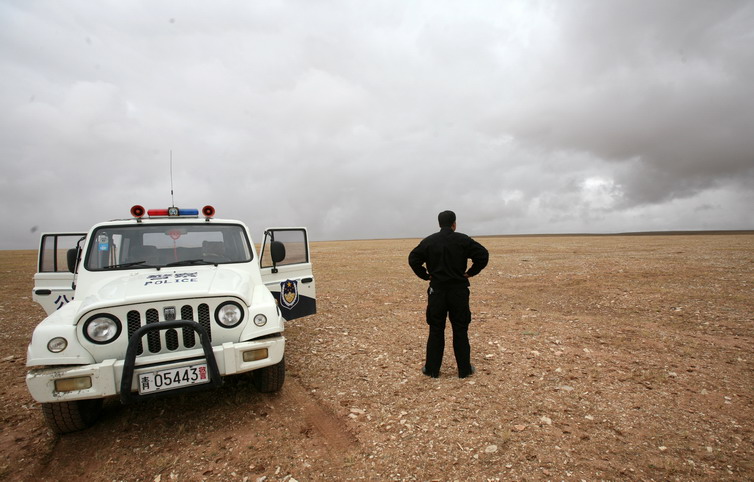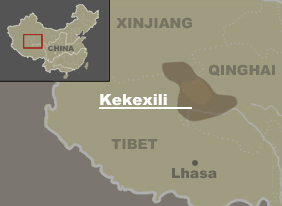
Patrolling the land, alone.
 On the remote border between China's Qinghai province and Tibet, there lies a vast, isolated region that the Tibetan antelope call home. The northern boundaries of this land, called Kekexili, are safeguarded by the stalwart crew of the Non-freeze Spring Station, one several outposts the government set up in 1999 to thwart the rampant illegal hunting of the endangered antelope. Located 4,600 meters above sea level, the station is named after a nearby spring. Kekexili became widely known after the release of its namesake film, also known as Mountain Patrol, in 2004, which depicts the bravery of local Tibetans who face death and starvation in saving the antelope from brutal poachers.
On the remote border between China's Qinghai province and Tibet, there lies a vast, isolated region that the Tibetan antelope call home. The northern boundaries of this land, called Kekexili, are safeguarded by the stalwart crew of the Non-freeze Spring Station, one several outposts the government set up in 1999 to thwart the rampant illegal hunting of the endangered antelope. Located 4,600 meters above sea level, the station is named after a nearby spring. Kekexili became widely known after the release of its namesake film, also known as Mountain Patrol, in 2004, which depicts the bravery of local Tibetans who face death and starvation in saving the antelope from brutal poachers.
With a fire burning eternally to counter the perennial chill, Zhan Jianglong, the station's chief, lives in this forsaken place with three co-workers. Theirs most entertaining moment of the day is two-hours of television watching, as there's hardly any social life around. To inject some excitement and novelty into their routine boredom, every patrol worker in Kekexili shifts from one station to another from time to time.
Besides patrolling the depths of the plateau, they also fill their time with trivial things such as accommodating travelers from afar, accepting interviews from a handful of curious media, helping to fix broken vehicles, and giving rides to railway platelayers they meet along the way …
But the overwhelming solitude and isolation changed when the Qinghai-Tibet railway started operation and cell phone signal reached the area in July 2006.
Coexisting with some 50,000 Tibetan antelopes and over one million other animals, Zhan and his fellow workers now face a scattering of illegal hunters and gold diggers, service personnel for the Qinghai-Tibet highway, and a great many travelers on the road. The company and diversions Zhan has today is driving his loneliness away, but he knows to the land he has been protecting, this is far from a positive turn of events.
| 1 | 2 |
- The World is Polluting China | 2007-12-27
- Xiang River in Crisis | 2007-12-26
- Xiang River in Crisis | 2007-12-24
- Conflicting Hats Worn by Changzhi | 2007-12-21
- SEPA: After the Storm | 2007-09-17











